
Greater Chattanooga Area tree services
Rooted Wisdom Blog

Land Clearing: Transforming Your Property for a Fresh Start
Imagine transforming your property into a blank canvas ready for your dreams. We understand how overwhelming the process can feel, and we know it's not easy to visualize the end result while navigating the challenges..
With years of experience in land clearing, we've helped numerous clients turn their visions into reality. Our expert team and specialized techniques ensure your property is prepared with precision.
By reading this, you'll gain insights on how to seize the opportunity to reshape your land and unlock its full potential. Your fresh start awaits!
Understanding the Purpose of Land Clearing
Land clearing involves the systematic removal of vegetation, trees, and other obstacles from a designated area. It's a preparatory process that aims to transform raw land into a clean and usable space. Land clearing serves various purposes, each contributing to enhancing the property and its potential uses. It's not just about creating a clean slate, but also about addressing safety concerns, reducing fire hazards, and preparing the land for construction or landscaping projects.
Methods and Techniques for Land Clearing
Land clearing isn't a one-size-fits-all process; it involves various methods and techniques tailored to the specific requirements of each property. Here's a closer look at some common approaches:
Manual Clearing: This hands-on method is well-suited for smaller areas or properties with limited access for heavy machinery. It involves physically removing vegetation using tools like axes, saws, and machetes. While it's labor-intensive, manual clearing allows for precise control over which plants are removed, making it a good choice for preserving specific vegetation.
Mechanical Clearing: When dealing with larger areas or dense vegetation, mechanical clearing comes into play. Heavy machinery like bulldozers, excavators, and skid-steer loaders are used to clear vegetation and debris quickly. This method is efficient and suitable for properties with substantial vegetation or obstacles.
Selective Clearing: In situations where preserving specific plants or areas is important, selective clearing is the way to go. This approach involves removing only the necessary vegetation while leaving other plants intact. It's commonly used in projects that aim to maintain a balanced ecosystem or protect sensitive areas.
Chemical Clearing: Herbicides are used in chemical clearing to eliminate unwanted vegetation. While this method can be effective, it requires careful consideration of the environmental impact and adherence to regulations. It's often chosen for its efficiency in eliminating persistent plants and invasive species.
Each method has its advantages and considerations, so selecting the right approach depends on factors like property size, vegetation type, and project goals. Consulting with professionals can help you make an informed decision and ensure the best outcome for your land clearing project.
Assessing Environmental Factors
Before embarking on a land clearing project, it's crucial to take stock of the environmental factors that could impact the process and the surrounding ecosystem. Here are key aspects to consider:
Ecosystem Diversity: Understanding the variety of plants and animals in the area is vital. Some species might be protected or endangered, requiring special considerations during the clearing process. By assessing ecosystem diversity, you can avoid negative impacts on local flora and fauna.
Soil Conditions: The type and quality of soil play a significant role in land clearing. Analyzing soil conditions helps determine how easily the land can be cleared, what plants might grow back, and whether erosion might occur after clearing. Addressing soil health is essential for the long-term sustainability of the cleared area.
Water Bodies: Proximity to water bodies like streams, rivers, or lakes affects land clearing. Regulations may require buffer zones to protect water quality and aquatic habitats. Proper planning is essential to prevent sediment runoff and pollution during and after the clearing process.
Climate Considerations: Climate factors such as rainfall patterns, temperature, and wind speed can impact the success of land clearing. Rainfall can cause erosion on freshly cleared land, while strong winds might spread debris. Accounting for these climate elements ensures the clearing process is both effective and sustainable.
Potential Hazards: Identifying potential hazards, such as steep slopes, unstable soil, or proximity to infrastructure, is essential to ensure safety during the clearing process. Professional assessments help determine the best practices to mitigate risks and protect workers and property.
By conducting a comprehensive assessment of these environmental factors, you'll make informed decisions that not only facilitate effective land clearing but also contribute to the preservation of the ecosystem's health and balance.
Hiring Professional Land Clearing Services
When it comes to transforming your property through land clearing, enlisting the expertise of professional land clearing services can make all the difference. Here's why it's a smart choice:
Expertise and Experience: Professional land clearing services have the knowledge and experience to handle various types of land and terrain. They understand the intricacies of different clearing methods, ensuring that the process is efficient, safe, and environmentally responsible.
Specialized Equipment: Land clearing often requires specialized equipment that most homeowners don't have access to. Professional services come equipped with machinery designed for various tasks, from tree removal to brush clearing. This ensures that the job is done quickly and effectively.
Environmental Compliance: Professional land clearing companies are well-versed in local regulations and environmental standards. They can navigate the permitting process and ensure that the clearing is done in compliance with legal requirements, protecting you from potential legal issues.
Safety Measures: Land clearing can be hazardous, especially for those without proper training. Professional crews are trained in safety protocols to minimize risks associated with heavy machinery, falling debris, and other potential hazards.
Efficient Project Management: Land clearing involves a series of tasks, from tree removal to debris disposal. Professional services have the expertise to manage these tasks efficiently, ensuring that your property is transformed within the specified timeline.
Post-Clearing Services: Professional land clearing services often offer additional services such as grading, erosion control, and site preparation for construction. This comprehensive approach ensures that your cleared land is ready for its intended use.
Peace of Mind: By hiring professionals, you can have peace of mind knowing that your land clearing project is in capable hands. You can focus on other aspects of your property transformation while experts handle the clearing process.
Whether you're looking to enhance your property's aesthetics, create space for new construction, or ensure fire safety, professional land clearing services bring the necessary expertise and resources to achieve your goals efficiently and effectively.
Post-Clearing Considerations
After the land clearing process is complete, there are several important steps to take to ensure that your property transformation goes smoothly. Here's what you need to consider:
Site Inspection: Once the land has been cleared, it's essential to conduct a thorough inspection of the area. Look for any remaining debris, stumps, or potential hazards that might have been missed during the clearing process.
Erosion Control: Land clearing can disrupt the natural landscape, leaving soil vulnerable to erosion. Depending on the extent of the clearing, you might need to implement erosion control measures such as mulching, seeding, or installing silt fences to prevent soil runoff.
Soil Testing: If you plan to use the cleared land for gardening, landscaping, or construction, consider conducting a soil test. This will provide valuable information about the soil's composition and nutrient levels, helping you determine the best approach for future use.
Replanting and Landscaping: If you've cleared vegetation that you want to replace, such as trees or shrubs, consider planning a replanting strategy. Select native plants that are well-suited to the environment and climate, and arrange them in a way that enhances the aesthetics of your property.
Future Use Planning: Before moving forward, outline how you intend to use the cleared land. Whether you're planning to build, landscape, or repurpose the area, having a clear vision will guide your next steps.
Site Preparation: If you're preparing the cleared land for construction, ensure that the site is properly graded and leveled. This will provide a stable foundation for any structures you plan to build.
Maintenance Schedule: Depending on your property's intended use, create a maintenance schedule. Regular upkeep, such as mowing grass, managing weeds, and pruning plants, will keep your property looking its best.
Environmental Considerations: As you proceed with post-clearing activities, keep environmental sustainability in mind. Implement eco-friendly practices and consider preserving natural habitats to support local wildlife.
Consultation: If you're unsure about any post-clearing steps, consult with landscaping professionals, horticulturists, or environmental experts. Their insights can help you make informed decisions for the future of your property.
Clearing land is just the beginning of your property transformation journey. By carefully considering these post-clearing steps, you can ensure that your newly cleared space is optimized for its intended purpose, whether it's creating a picturesque landscape, constructing a new building, or simply enjoying open space.
Ready to Begin Your Property Transformation?
In the pursuit of transforming your property into a fresh canvas for new possibilities, land clearing emerges as the crucial first step. By understanding the purpose of land clearing, exploring various methods, assessing environmental factors, considering professional services, and planning for the aftermath, you're setting the stage for a successful property transformation journey.
Remember, every property is unique, and the approach to land clearing should be tailored to your specific goals and the characteristics of your land. As you embark on this journey, keep in mind that professional guidance and expertise can make a significant difference in the outcome.
Whether you're looking to enhance your property's aesthetics, prepare it for construction, or create a safer environment, our team is here to help. With years of experience and a commitment to delivering top-notch results, we offer expert land clearing services that cater to your specific needs.
Take the first step towards your property's fresh start by reaching out to us for a consultation. Our team of experts is eager to understand your vision, offer tailored solutions, and provide a comprehensive quote for your project. Let's work together to turn your property into a space that aligns with your dreams and aspirations.
Call us for a quote at (706) 524-8288 and kickstart your property transformation journey!
Keep Your Home and Yard Looking Beautiful All Year Round By Removing Dangerous and Unsightly Trees
Frequently Asked Questions
How do I know if a tree needs to be removed?
Signs that a tree may need to be removed include severe damage, extensive disease or decay, leaning or instability, proximity to structures or power lines, or a tree being dead or dying.

Can you help with insurance claims for tree services?
Absolutely. We are authorized to work insurance claims related to tree services, and we can assist you throughout the claims process.
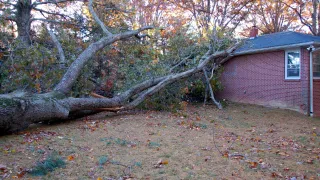
How can I prepare for tree services at my property?
We recommend clearing the area around the trees, ensuring access for our equipment, and informing us about any specific considerations or restrictions.
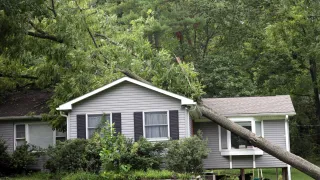
Are you licensed and insured?
Yes, we are a licensed and insured tree service company. Our team consists of trained professionals who adhere to industry standards and safety protocols.

What is the cost of tree removal?
The cost of tree removal can vary depending on factors such as tree size, location, complexity, and any additional services required. We offer free estimates to provide accurate pricing based on your specific needs.
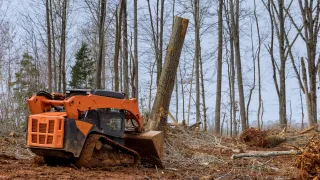
Can you remove a tree close to my house or other structures?
Yes, we have experience in safely removing trees near structures. Our trained professionals use specialized techniques and equipment to ensure the protection of nearby buildings during the removal process.
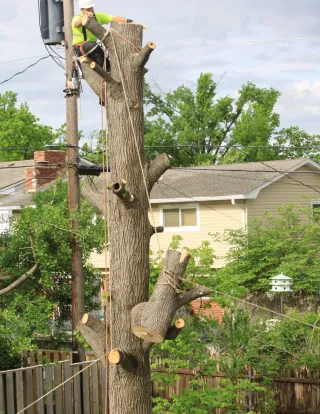
What measures do you take to ensure safety during tree services?
Safety is our top priority. Our team follows strict safety protocols, uses professional-grade equipment, and is trained in industry best practices to minimize risks and ensure a safe working environment.
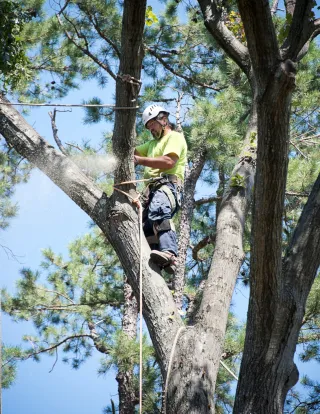
Do you offer free estimates?
Yes, we offer free estimates for our tree services. Contact us to schedule an appointment and discuss your specific needs.
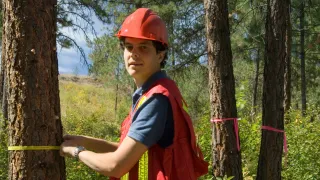
Proudly Serving the Greater Chattanooga and North Georgia areas including...
Chattanooga, Hixson, Signal Mountain, Cleveland, Ooltewah, Lookout Mountain, Red Bank, East Brainerd, East Ridge, Rossville, Chickamauga, Chattanooga Valley, Flintstone, Dalton, Fort Oglethorpe, Dalton, Rocky Face, Tunnel Hill, Rock Spring, LaFayette, and more.
© 2025. Out On A Limb For You, LLC. All rights reserved. Privacy Policy


